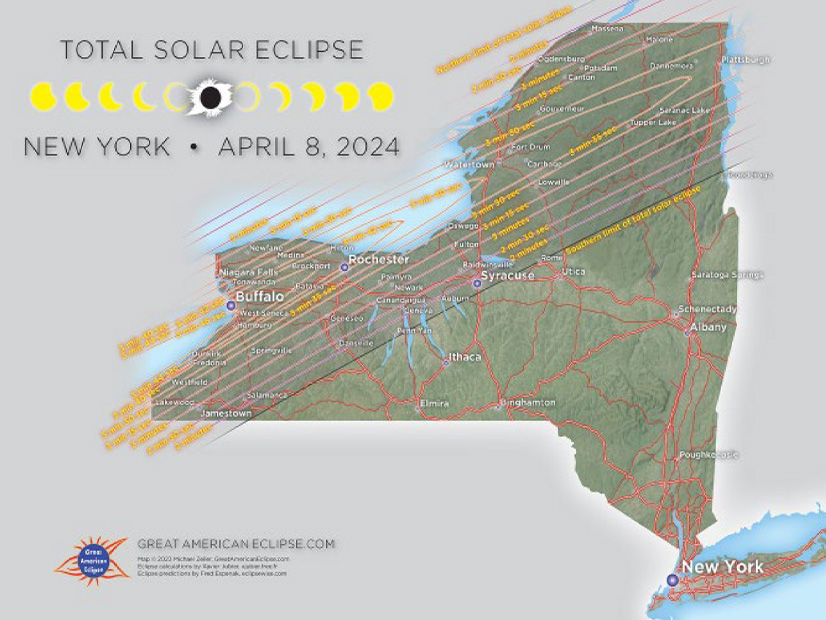Two initiatives designed to protect marine life, specifically whales in one case, will shape the development of two New Jersey offshore wind projects as developers face rising public concern over the impact of coastal wind projects on tourism, commercial fishing and marine life.
The National Oceanic and Atmospheric Administration (NOAA) on Sept. 13 issued a series of rules under which the 1,100-MW Ocean Wind 1, the state’s first OSW project, could move ahead while also ensuring the “least practicable adverse impact on marine mammal species or stocks and their habitat.”
The rules limit when and how Ocean Wind 1 developer Ørsted can conduct certain activities, such as piledriving, exploding ordnance and other construction activities, and set out how the developer should look out for whales and monitor and report any activity that affects them. The rules are part of the agency’s Letter of Authorization that allows the project to go ahead with certain construction activities.
The rules package demonstrates how the impact of OSW projects on marine life has become a significant issue.
NOAA on Monday also announced the Biden Administration has set aside $82 million in funds from the Inflation Reduction Act to harness technology to “conserve and recover” the population of North Atlantic right whales, which face extinction in part because of collisions with ships and entanglement with ropes and nets.
In an unrelated move, Community Offshore Wind, which in August submitted a proposal for a 1.3-GW project in New Jersey’s third OSW solicitation, last week announced it has struck a “groundbreaking” five-year partnership with NOAA “to promote the exchange of data and expertise that will transform environmental monitoring for offshore wind projects.” (See NJ’s 3rd OSW Solicitation Attracts 4 Bidders.)
The developer, a joint venture between RWE and National Grid Ventures, said in a release that it will collaborate with NOAA on how to study the environmental impacts on the marine ecosystem, in part by increasing transparency and sharing expertise between researchers and developers.
“Our goal is to bring offshore wind energy monitoring activities into this partnership,” Jon Hare, director of the Northeast Fisheries Science Center, which is part of NOAA, said in the release. “This agreement is our first chance to make these partnerships a reality and show by example that effective scientific monitoring benefits everyone.”
Doug Perkins, project director for Community Offshore Wind, said he believes the scientific data would be “invaluable as we continue to study, and seek to mitigate, the impacts of offshore wind development on marine ecosystems.”
Shifting Public Perception
Concern over the impact of offshore wind projects on marine life, especially whales, has escalated since the start of the year as a number of dead whales — one press report said as many as 12 — have washed up on the New Jersey shore. Marine life supporters and opponents of the projects have seized on the deaths, suggesting that OSW development should be halted while investigators study whether there is a link between the deaths and preliminary ocean-floor studies conducted in preparation for the turbines’ construction.
State and federal investigators, including those for NOAA, say there is no evidence of such a link, and have outlined reasons why there wouldn’t be. (See NJ Legislators Probing Whale Deaths Hear No Clear-cut Conclusions.) One factor in the deaths isvessel strikes as whales increasingly move into areas that put them in the path of ships or take them into shallow waters near the shore looking for food, researchers say.
Maddy Urbish, head of government affairs and market strategy for Ørsted in New Jersey, said in response to NOAA’s issuance of the rules that “Ørsted prioritizes coexistence with our local communities, marine wildlife and ocean neighbors.”
“This permit strictly prohibits Ocean Wind 1 from seriously injuring or causing the death of any marine mammal and outlines mitigation measures the project will put in place including noise abatement, vessel speed and time of year restrictions, and dedicated observers aboard every vessel,” she said.
The rules set down by NOAA for Ocean Wind 1 were part of the agency’s issuance of an “incidental take” Letter of Authorization, which is required under the Endangered Species Act when a development activity potentially endangers the health of a protected species.
The rules establish “permissible methods” to provide for the “mitigation, monitoring and reporting” of conditions during the construction of Ocean Wind 1. Among the requirements are:
-
- A seasonal moratorium on impact pile driving from Dec. 1 to April 30, the months of the greatest presence of North Atlantic right whales.
- A requirement that ordnance detonation take place only during daylight.
- A requirement that visual and passive acoustic monitoring be carried out before certain activities are conducted. The monitoring must be done by trained observers.
- Training required for all Ocean Wind personnel to “ensure marine mammal protocols and procedures are understood.”
- A delay to construction or ordnance detonations if whales or other mammals are spotted in the area. Pile driving must be shut down — “if feasible” — if a North Atlantic right whale is seen in the area.wha
- A requirement that impact pile driving must be done with the “least amount of hammer energy necessary” and observers must continue to look for mammals for 30 minutes after any impact pile driving or ordnance detonation.
Whale Extinction
The rules give NOAA the right to withdraw or suspend a Letter of Authorization if a project does not “substantially” comply with the directives set out by the agency.
In the announcement Monday, NOAA said the $82 million in funds from the Inflation reduction Act would support the use of technologies such as “passive acoustic monitoring” and the development and implementation of other technologies to enable vessels to detect and avoid North Atlantic right whales and other large whales.
North Atlantic right whales are “approaching extinction” the agency said in a release, with only 350 such whales alive and fewer than 70 “reproductively active females.” The funds also will go to developing new technologies such as high-resolution satellite information to help monitor whale movement and understand whale distribution and habitat.

